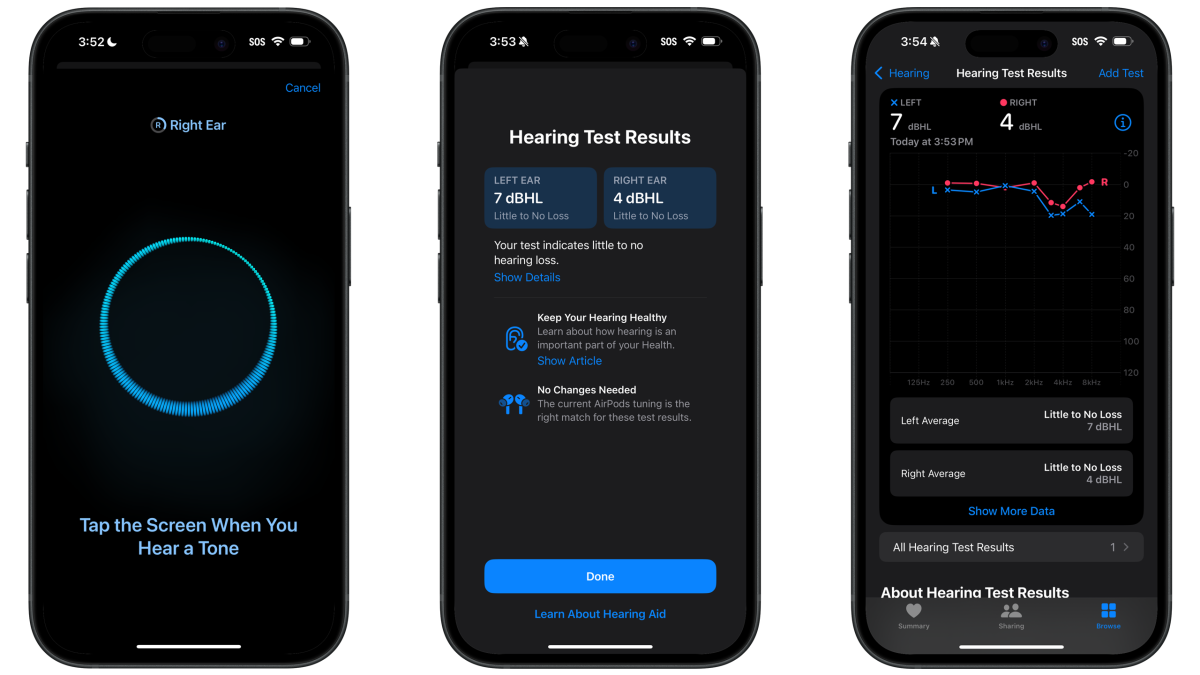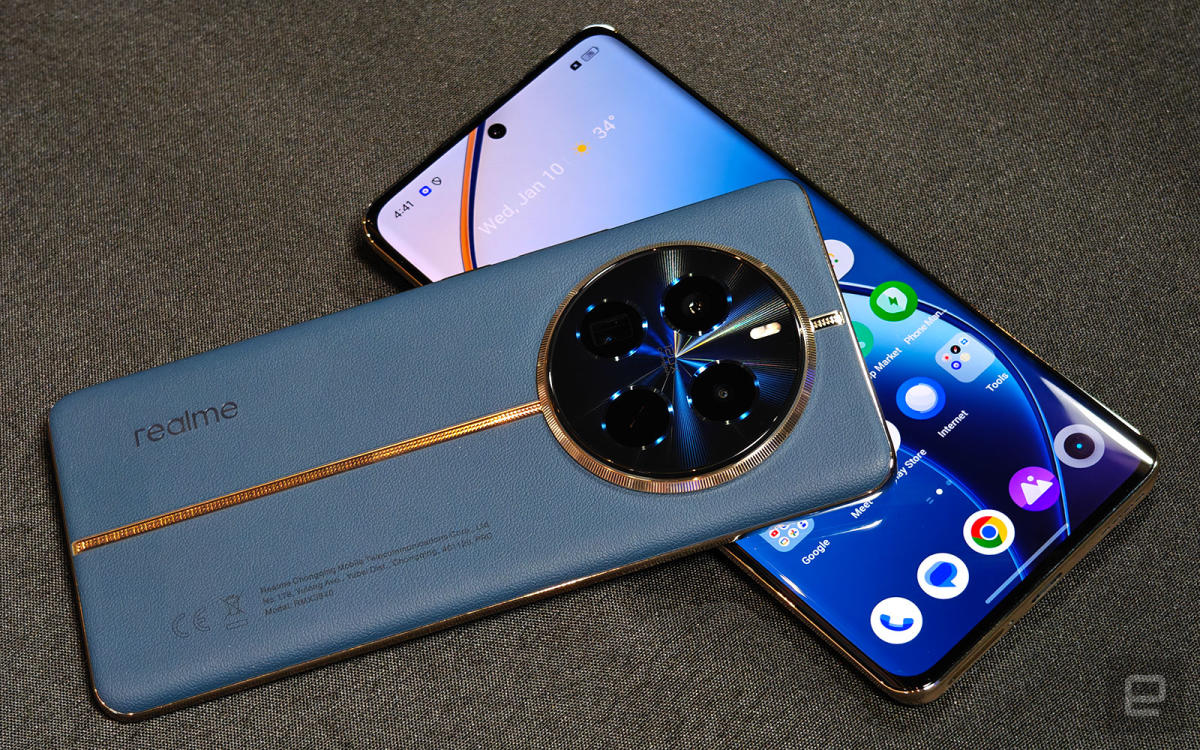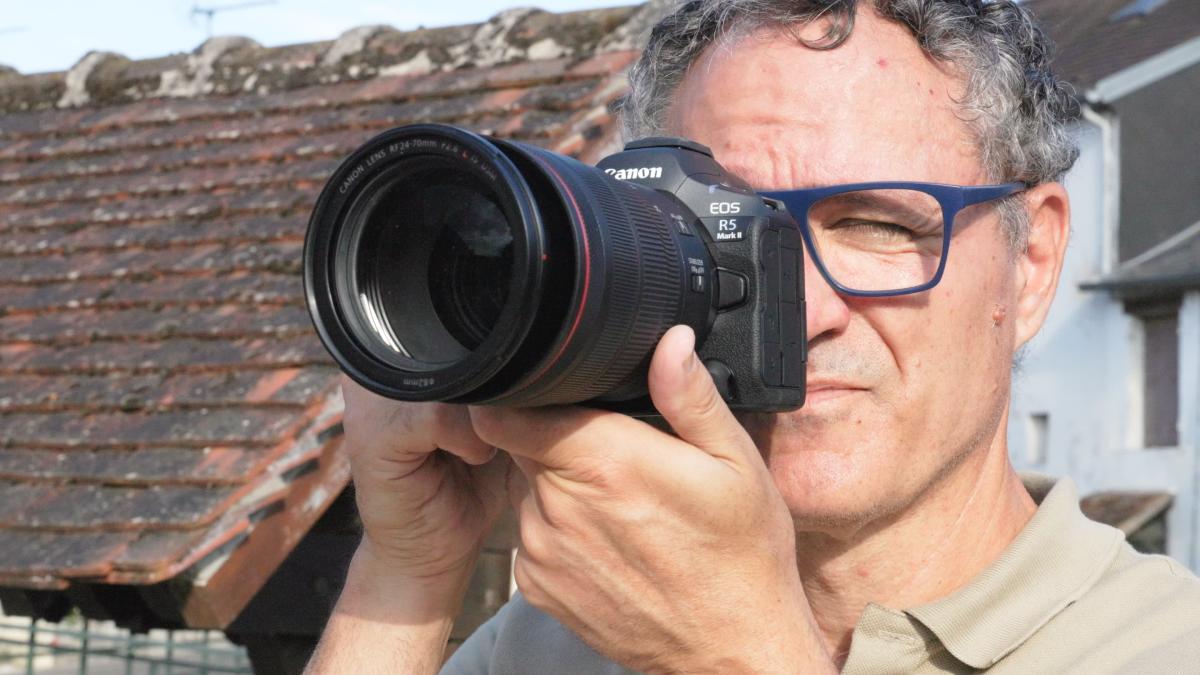When Earlier this week, Apple unveiled its highly anticipated package announced at the iPhone event . This includes a hearing aid and hearing protection, as well as a “clinically validated” hearing test in your pocket. With the combination of an iPhone and a pair of second-generation AirPods Pro, you can get a hearing test similar to the one you get at an audiologist’s office without leaving your home. Best of all, the whole thing takes about five minutes and gives you instant detailed results. Here is a step-by-step guide on how to use it.
Update your iPhone and AirPods Pro 2
Before you can access Apple’s hearing test, you need to make sure that your iPhone is updated to iOS 18.1 and that your AirPods Pro 2 have the latest firmware (7B19). If you don’t have both of these updates, none of the new hearing health features will appear in AirPods settings or the Apple Health app. Additionally, you won’t be able to take a hearing test or use any of the other new tools on the first generation AirPods Pro (2019 model).
You can check your current iOS version from the iPhone Settings menu. Scroll down to General and tap on Software Update. From here, you can see what version of iOS you’re running and whether there’s a pending update ready to download and install. Once again, you’re looking at iOS 18.1 here, as this is the software version that introduces a suite of hearing health features.
To check the firmware on AirPods Pro 2, connect the headphones to your iPhone and go to the Settings menu. Here, AirPods Pro 2 should appear at the top of the list, and tapping on that option will take you to settings. You can also access AirPods Pro 2 details from the Bluetooth menu by tapping the “i” icon next to the device name.
Once you’re in the AirPods settings menu, swipe down to the bottom of the home screen. One of the last things you’ll see is a bunch of firmware information for the AirPods Pro 2, including the current version. If you see 7B19, you’re good to go. If not, your headphones haven’t updated yet, but you can try to force them to do so instead of waiting for the over-the-air process to happen on its own.
To do this, connect the AirPods Pro 2 to the iPhone for at least 30 seconds and play music to confirm that the connection is stable. Then put the earbuds back into the charging case and close the lid, keeping the AirPods Pro 2 within range of the iPhone. Now check the Bluetooth settings and if you see that the AirPods Pro 2 stay connected in the closed charging case for more than 10 seconds, this should indicate that the update is in progress.
Where to find Apple’s hearing test
Apple gives you two places to access the hearing test, and they’re both easy to find. The first is in the AirPods menu, which you can access from the main Settings menu or the Bluetooth menu. The Hearing Health section is clearly displayed under the Noise Control options on the main screen. In this section, “Take a Hearing Test” will be the third item after Hearing Protection and Hearing Aids and will appear in blue.
The fastest way to get to the hearing test in the health app is to click Browse in the menu below the main Summary screen. From there, select “Hearing” with the blue ear icon and scroll down to “Get more from health.” Here you will see the option to take a hearing test with AirPods Pro 2.
How to pass Apple’s hearing test
Once you’ve updated your devices and found your hearing test, the hardest part is over. A software-based test guides you through the entire process with detailed information on what to expect and what the results mean for you. After selecting “Take a Hearing Test,” you’ll tap “Start” to begin the process. First, the app will ask you if you’re 18 or older, if you have any allergy or cold symptoms, and if you’ve been in a loud environment (like a concert) in the last 24 hours. If the answer is yes to either, the second two items may affect the accuracy of your test.
On the next screen, the AirPods and iPhone tandem will make sure your surroundings are quiet enough for the hearing test. Too much background noise will make it difficult for you to hear finer tones during a performance. Next, the setup will make sure the AirPods Pro 2 fit properly in your ears and provide an adequate seal for the test. To avoid distractions, you will receive a warning that Do Not Disturb will be active during the test, and that active noise cancellation (ANC) will be enabled at this point. The test will then suggest some sample tones and tell you that each tone will play three times during the test.
When the test starts, you’ll simply tap the iPhone’s screen when you hear a tone (you only need to tap once per tone). The test starts with your left ear before moving to the right. Don’t worry if you miss one: the test will repeat any sounds it thinks you missed along the way. Once the test is complete, you’ll immediately receive a detailed audiogram on your iPhone showing the results for each ear, including which frequencies (if any) you have difficulty hearing. Results can also be viewed in the Health app at any time, and you can export a PDF file to share with a doctor or for other purposes as needed.
What to do with your hearing test results
If you have little or no hearing, Apple’s tool will give you suggestions on how to keep your hearing healthy and let you know that no changes are necessary to the tuning of your AirPods Pro 2. If you have mild to moderate hearing loss, ask if you want to set up Apple’s Hearing Aid features, including a software hearing aid, Media Assist, and Conversation Boost. Finally, if the test determines that you have severe or profound hearing loss, Apple will recommend that you see a professional for further evaluation.
AirPods Pro 2 hearing aid features are only intended for users with mild to moderate hearing loss, and the hearing test can only measure hearing loss below 85 dBHL. How hearing loss categories are divided according to the World Health Organization:
-
Low loss: up to 25 dBHL
-
Light loss: 26 – 40 dBHL
-
Average Loss: 41 – 60 dBHL
-
Heavy loss: 61 – 80 dBHL
-
Above Depth Loss: 80 dBHL



